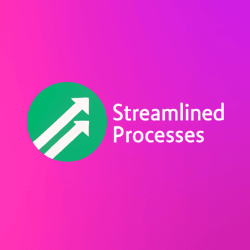For Recurring Billing Software For Startups, see our main page here.
Why Startups Need Recurring Billing Software
Recurring revenue is the lifeblood of many startups today. From SaaS platforms to subscription boxes, consistent income helps avoid cash flow surprises. But handling this manually—or with outdated tools—can lead to billing errors, delayed payments, and frustrated customers.
That’s why choosing the right Recurring Billing Software For Startups is more than a technical decision; it’s a growth strategy. When implemented well, it can reduce churn, speed up receivables, and unlock your team’s productivity.
What Is Recurring Billing Software For Startups?
Recurring billing software automates the charging and invoicing process for ongoing services. Instead of invoicing customers manually each month, the system schedules and processes payments automatically. This creates a seamless experience for both your team and your users.
For example, a startup offering a monthly fitness app subscription doesn’t need to chase each user for payment. The software does it quietly in the background, sends receipts, manages failed transactions, and updates account records—all without human touch.
Moreover, startups can scale faster because the software takes care of repeatable tasks. As your customer base grows, the system grows with you—no need for additional billing staff each quarter.
Top Features to Look For in Recurring Billing Software For Startups
Choosing software is tricky, especially when budgets are tight. But a few key features can make a big difference long-term.
- Automated Invoicing: Generates and sends invoices on schedule.
- Multiple Payment Gateways: Supports PayPal, Stripe, credit cards, ACH, etc.
- Subscription Management: Lets users upgrade, downgrade, or pause their plans easily.
- Dunning Management: Helps recover payments after a failed charge.
- Analytics and Reporting: Offers insights into monthly recurring revenue (MRR), churn, and lifetime value.
- Tax and Compliance Support: Handles regional tax rates and regulatory requirements like GDPR or PCI-DSS.
In addition, many tools now offer integrations with Slack, CRM systems, and accounting software like QuickBooks or Xero.
Popular Options: A Comparison of Tools
There’s no one-size-fits-all solution. Different startups have different billing needs. Below are some popular options worth considering.
- Stripe Billing: Great for developers and product-led teams. Offers powerful APIs and built-in automation. Used by startups like Slack and Zoom.
- Chargebee: Ideal for SaaS and B2B companies. Includes trial management, revenue recognition, and customization.
- Zoho Subscriptions: A budget-friendly choice with a wide range of features. Integrated with other Zoho apps.
- Recurly: Known for scalability and strong analytics. Trusted by brands like Twitch and SlingTV.
- FreshBooks: Designed for freelancers and small business owners. Easy to use, with basic automation features.
For example, early-stage startups with technical expertise often choose Stripe Billing for its flexibility. On the other hand, founders who want an out-of-the-box, no-code solution may gravitate to Chargebee or Zoho.
Startup Case Study: How One Company Grew with Smart Billing Automation
GreenCore Analytics, a sustainability-focused SaaS startup, adopted Recurring Billing Software For Startups during their second year of operation. Initially, they relied on manual invoicing through spreadsheets and PDF templates sent by email.
As they scaled past 250 users, billing errors increased. Delays in invoicing created dips in cash flow. Additionally, customers began complaining about payment failures not being properly reported.
They switched to Chargebee, which integrated with Stripe and their CRM. As a result, they cut payment failures by 30% and improved monthly cash flow consistency. Moreover, they reclaimed over 8 hours per week in administrative time—time that founders could then spend on product and customer relationships.
Benefits Go Beyond Automation
While automation is the most obvious benefit, Recurring Billing Software For Startups offers much more:
- Better Customer Experience: Seamless upgrades, accurate invoices, and timely communications.
- Revenue Forecasting: Tools help predict growth and anticipate churn.
- Investor Readiness: Clean records and recurring revenue patterns signal maturity to potential investors.
Startups often operate under pressure—moving quickly, pivoting frequently. Having reliable billing infrastructure allows you to adapt without risking your revenue pipeline.
Common Pitfalls and How to Avoid Them
Even the best software can fall short if not set up properly. Here are common mistakes and how to fix them:
- Ignoring Failed Payments: Implement dunning logic to retry charges and notify customers.
- Poor Plan Structuring: Test your plan tiers with real users before long-term setup.
- Underusing Features: Explore integrations and reports from day one rather than sticking to default settings.
- No Exit Strategy: Choose platforms that allow data export so you’re not locked in long-term.
Most importantly, involve both technical and non-technical team members when choosing a solution. This ensures the software meets business needs and technical constraints.
Trends Shaping Recurring Billing Software For Startups
The landscape is evolving fast. As subscription models become the norm, billing tools are adapting in several ways:
- AI Assistants: Suggest optimal pricing changes based on user behavior.
- Micro-Subscriptions: Emerging pricing models include mini plans or pay-as-you-go features.
- Global Compliance: More startups now go global from day one. Modern tools handle multiple currencies and tax jurisdictions.
Furthermore, embedded billing is becoming standard in low-code platforms. For example, platforms like Bubble or Webflow now integrate directly with tools like Stripe—with almost no coding required.
FAQ: Recurring Billing for Startups
- Is this software only for SaaS companies?
No. It’s also used by subscription boxes, service providers, educational platforms, and more. - What if I only have 10 customers?
Starting early helps you scale without cracks in your billing system. Most tools offer affordable entry plans. - How long does setup take?
Depending on the platform, setup ranges from a few hours to two weeks. Stripe and Chargebee offer onboarding help. - Can changing software later hurt my startup?
Yes, if not planned properly. Choose tools that allow data export and API access to prevent vendor lock-in.
This article was created with the assistance of AI tools and reviewed by our team at Streamlined Processes LLC to ensure accuracy and relevance.
Follow us on Facebook here.

